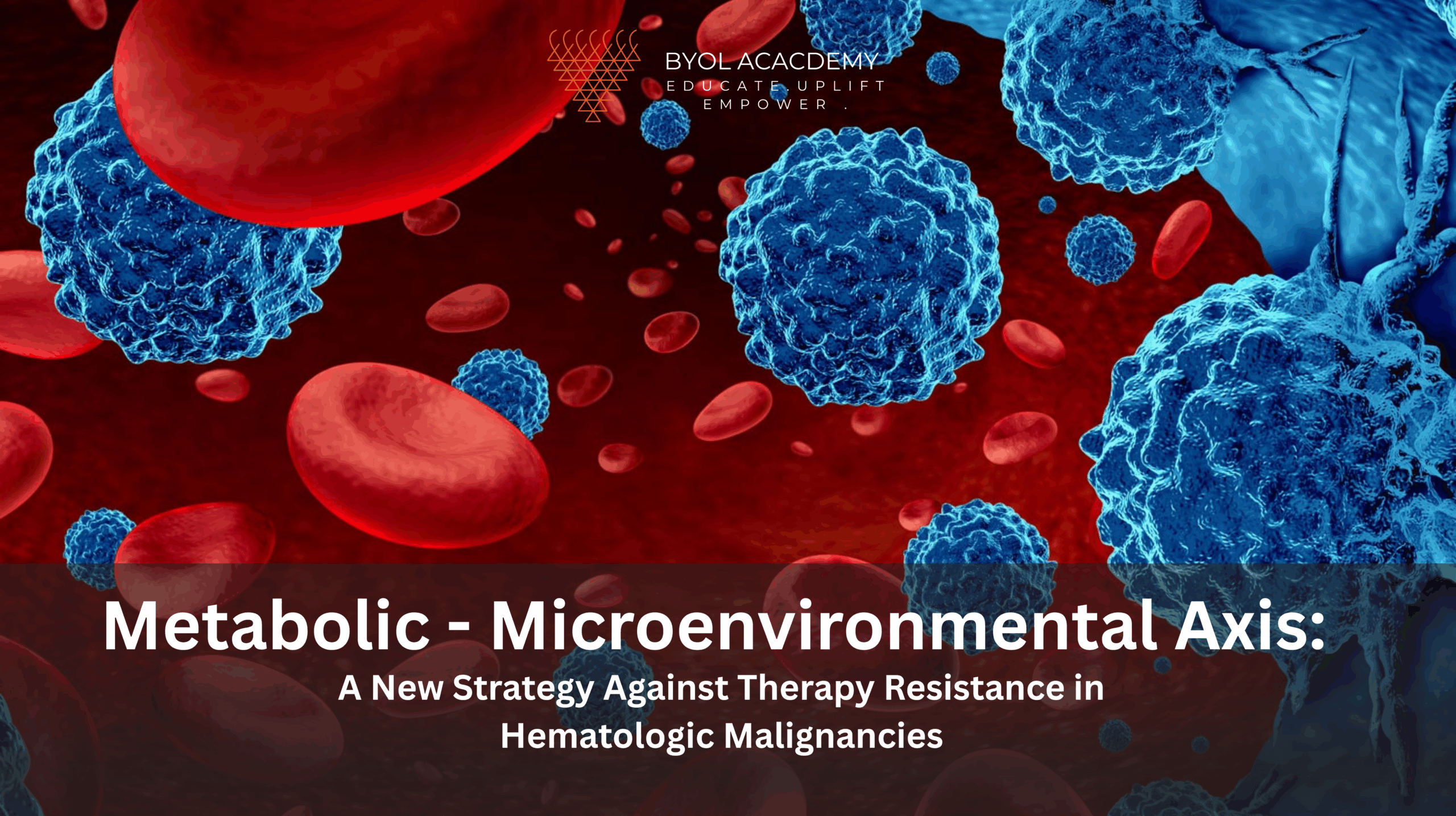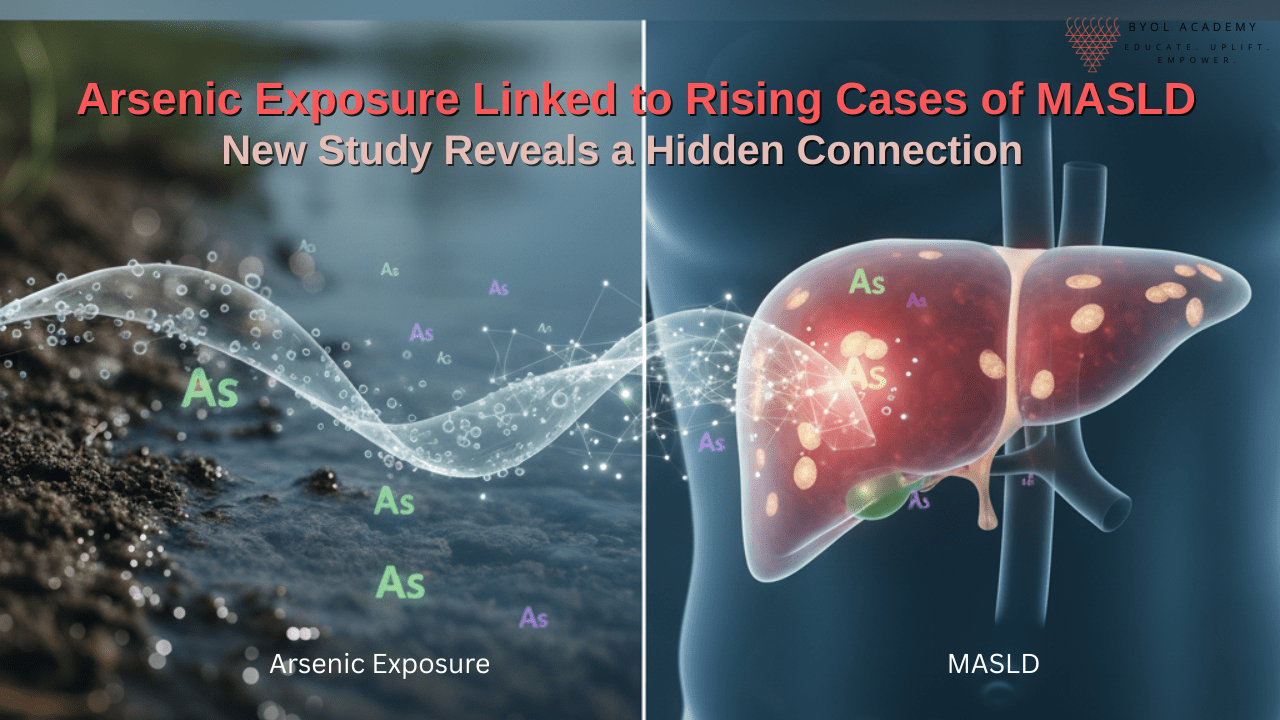Introduction “The Moment Between Science and a Heartbeat” In the quiet hum of an IVF laboratory, a moment unfolds that […]
Metabolic – Microenvironmental Axis: A New Strategy Against Therapy Resistance in Hematologic Malignancies

A New Frontier in Hematology
In the fight against blood cancers such as leukemia, lymphoma, and multiple myeloma, one of the most persistent challenges remains therapy resistance and disease relapse. Despite groundbreaking advances in targeted therapy and stem cell transplantation, many patients still face the return of disease after treatment.
Recent discoveries in hematology are shifting the way scientists view these relapses “not just as the result of genetic mutations, but as the product of a complex ecosystem” within the bone marrow microenvironment. This environment, rich in stromal and vascular signals, supports malignant cells and allows them to survive treatment stress through intricate biological communication.
The Microenvironment: A Hidden Protector
Inside the bone marrow, cancer cells do not exist in isolation. They are surrounded by a diverse community of stromal cells, blood vessels, extracellular vesicles, and metabolic cues. This environment forms a nurturing niche that helps malignant stem and progenitor cells adapt, become dormant, and ultimately resist therapy.
For example, extracellular vesicles tiny packages of molecular information exchanged between cells – carry proteins, lipids, and genetic material that can reprogram neighboring cells to become more supportive of cancer survival. Likewise, stromal and vascular signals help create a sanctuary where malignant cells can hide from chemotherapy or immune attacks.
Mitochondria and Redox Pathways: Engines of Adaptation
At the heart of these survival mechanisms lie the mitochondria “the powerhouses of the cell” and the redox systems that control oxidative balance. Together, these metabolic regulators determine whether a cell grows, differentiates, or dies.
In leukemia and related disorders, cancer stem cells often manipulate mitochondrial activity to generate just enough energy to survive, while avoiding stress-induced death. They fine-tune their redox signaling “the balance between oxidation and reduction inside cells” to maintain a state of controlled dormancy.
This flexibility allows them to withstand chemotherapy and re-emerge later, fueling relapse. Understanding these processes especially mitochondrial quality control, autophagy, and redox adaptation is now at the cutting edge of hematology research.
Exploring the Crossroads of Metabolism and the Microenvironment
A growing body of work is exploring how these metabolic adaptations interact with the bone marrow’s structural and vascular networks. The convergence of metabolic rewiring, microenvironmental cues, and redox regulation offers a more complete picture of therapy resistance.
Researchers are particularly interested in how:
- Mitochondrial quality control and autophagy influence cell survival and self-renewal.
- Redox metabolism contributes to regulated cell death pathways like ferroptosis, especially in leukemia.
- Extracellular vesicle–mediated communication shapes how bone marrow niches sustain malignant cells.
- Vascular and stromal factors support stem-like cancer cell populations.
- Metabolism-driven mechanisms influence outcomes after transplantation and other therapies.
Toward New Therapeutic Strategies
The integration of these findings could revolutionize how we treat hematologic malignancies. By targeting the metabolic and environmental dependencies that shield cancer cells, researchers hope to make treatments more durable and less prone to resistance.
Potential future therapies may include:
- Drugs that disrupt mitochondrial dynamics or redox balance in malignant stem cells.
- Inhibitors that block vesicle-mediated communication between cancer and stromal cells.
- Strategies that reprogram the bone marrow microenvironment to make it less hospitable to cancer.
Such innovations promise not only to extend remission periods but also to bring us closer to curative, personalized therapies.
An Open Call for Collaboration
This evolving field welcomes contributions from across the scientific spectrum from molecular biologists and hematologists to bioengineers and clinicians. By uniting insights from cellular metabolism, redox biology, and tumor microenvironment research, we can better understand how therapy resistance emerges and persists.
The ultimate goal: to transform these discoveries into new translational opportunities that prevent relapse and improve outcomes for patients with blood cancers.
References
- Jones, C. L., Stevens, B. M., D’Alessandro, A., Culp-Hill, R., Krug, A., & Pollyea, D. A. (2018). Inhibition of amino acid metabolism selectively targets human leukemia stem cells. Cancer Cell, 34(5), 724–740. https://doi.org/10.1016/j.ccell.2018.10.005
- Raffel, S., Falcone, M., Kneisel, N., Hansson, J., Wang, W., & Lutz, C. (2017). BCAT1 restricts αKG levels in AML stem cells leading to IDHmut-like DNA hypermethylation. Nature, 551(7680), 384–388. https://doi.org/10.1038/nature24294
- Tiziani, S., Cho, J., & Paternostro, G. (2017). Mitochondrial redox signaling and metabolic adaptation in leukemia. Frontiers in Oncology, 7, 207. https://doi.org/10.3389/fonc.2017.00207
- Korn, C., & Augustin, H. G. (2020). Mechanisms of vessel pruning and regression. Developmental Cell, 56(2), 185–201. https://doi.org/10.1016/j.devcel.2020.10.005
- Phelan, D., Searle, E. J., & Carey, B. W. (2022). Targeting redox metabolism to overcome drug resistance in hematologic malignancies. Trends in Cancer, 8(5), 394–407. https://doi.org/10.1016/j.trecan.2022.02.003
- Kuntz, E. M., Baquero, P., Michie, A. M., Dunn, K., & Keane, P. (2017). Targeting mitochondrial oxidative phosphorylation eradicates therapy-resistant chronic myeloid leukemia stem cells. Nature Medicine, 23(10), 1234–1240. https://doi.org/10.1038/nm.4399


